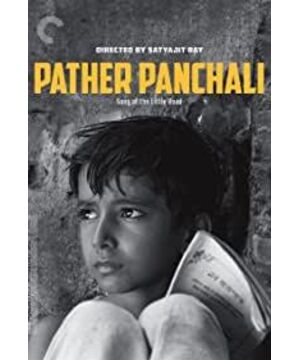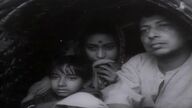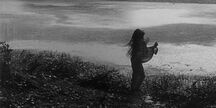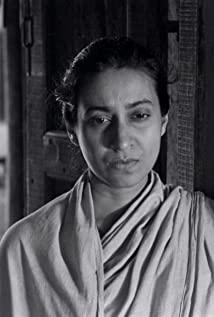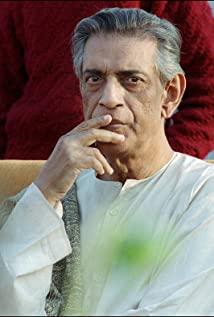As for the most famous representative of Indian cinema in the world, Satyajit Rey, who was born in Kolkata, will definitely bear the brunt of it. He won the Golden Lion, the Golden Bear, and the Lifetime Achievement Award at the Venice International Film Festival and the Oscars. Film masters such as Akira Kurosawa and Godard have endorsed them. When he first entered the film industry, he became famous overseas for his Apu trilogy, which delicately and gently showed the joys and sorrows of an ordinary Indian family, and is an immortal classic of Indian movies.
According to the Chinese, Satyajit Rey was born with a golden key, and he was still a scholar. His grandfather was an entrepreneur (a publishing business), writer and illustrator who founded a children's magazine, and his father was a famous Bengali poet. Unfortunately, in 1923, two years after Rey was born, his father died. He was taken care of by his mother and he completed his studies at the University of Kolkata and got a degree in physics.
Rey's interest is not in natural sciences. After graduation, he went to the Art School of the International University founded by Tagore. In 1943, he worked as an art designer for a British advertising company in Kolkata. His salary was very low, so he also worked for a publishing house. It was in this publishing house that Rey met his debut novel [Song of the Earth], the original novel of the same name, which inspired his desire for film creation.
As a movie lover, in 1947, Rey and Tonghao founded the Kolkata Film Association, extensively involved in European and Hollywood movies, and the idea of making movies was born. He first worked with a professional film production team in 1949.
French director Jean Renoir was filming [Dahe] in India at this time, and he was hired as a location assistant. In 1950, Rey was sent by the company to its London headquarters, where he took the opportunity to watch a large number of the latest movies. Vittorio Desica's [The Bike Stealer] inspired and inspired him to run towards film directorship.
[Stealing the bike]'s new realism approach-starring by non-professional actors, low-cost production, and shooting in real environments, gave Rey the direction of directing the film. [Song of the Earth] is a low-cost movie made by "amateurs" shot in a real environment. Rey has searched for producers in Bangladesh, and no one wants to invest in such a realistic film with no market prospects. As a last resort, he used his savings to start shooting.
The West Bengal government funded the film, but it is said that it was out of a misunderstanding. Rey’s mother-trust relationship allowed him to meet the chief minister of the state. The minister heard the title "Song of the Earth" (literally translated as "Song of Small Roads" in Bengali or English), and thought it was a positive promotion of road construction in India. Film, so Rey was asked to go to a community development project office to collect funds.
In fact, [Song of the Earth] not only has nothing to do with road construction, but also has nothing to do with Indian nationalism after independence. When we look into it, it even made the Indian government and people "stunned"-the Apu family in a poor village lived in a shabby life and completely lost sight of the hope of a new India.
Rey spent two and a half years trying to finish [Song of the Earth]. At that time, he was still working in an advertising company and could only shoot on weekends. Most of the members of the crew are new to movies and have no experience. There was a producer who was willing to invest in the film, but asked to modify the script, but Rey refused.
In 1954, the staff of the Museum of Modern Art in New York came to Kolkata for the preparation of the Indian art exhibition. Rey showed them the stills of [Song of the Earth] and got the chance to premiere at the Museum of Modern Art in New York. A few months later, director John Houston went to India to look for locations for his movie. He was entrusted by the Museum of Modern Art in New York to explore the class [Song of the Earth]. After watching the shooting and clips, he was full of praise.
In 1955, [Song of the Earth] premiered at the Museum of Modern Art in New York, and received an overwhelming response. After that, it was screened in the United States for eight months. The following year, the film was shortlisted for the main competition at the Cannes International Film Festival, and Rey has been a blockbuster ever since.
"The Times of India" gave a very high evaluation, saying that "it is ridiculous to compare it with other Indian films." The representative director of the British Free Film Movement, Lindsay Anderson, also wrote an article to praise the film. However, French New Wave director François Truffaut gave a disdainful evaluation: "I don't want to watch a movie where farmers eat with their hands."
In India, [Song of the Earth] has certainly caused controversy. The most prominent argument is the dissatisfaction with the backward side of India in the film. In 1957, the movie [Mother of India] starring Nargis was released, which aroused the enthusiasm of Indian nationalism. This movie stands on the opposite of [Song of the Earth] and shows the determination of the Indian people to build a country.
Many years later, as a representative of the Indian spirit, Nargis severely criticized [Song of the Earth], thinking that it was just a movie that satisfies the imagination of Westerners with impoverished India. This kind of criticism can be seen in realistic films in almost all countries.
The charm of [Song of the Earth] is obviously not the phenomenon of poverty itself, but the performance of the Apu family beyond the limitations of the times and regions. They are not, as critics say, only negative poverty. The poverty that critics do not want to see is the background color of their existence, which has shaped their personality and framed their lives. Their desire to break free from poverty, there is a moment when everyone can empathize.
With the success of [Song of the Earth], the production of [Song of the River] became very smooth, and it only took more than a year to complete. In 1956, [Song of the River] won the Golden Lion Award at the Venice Film Festival. It was also at this time that Rey had the idea to complete the Arp trilogy, so he had [Song of the Big Tree] (1959).
View more about Pather Panchali reviews


